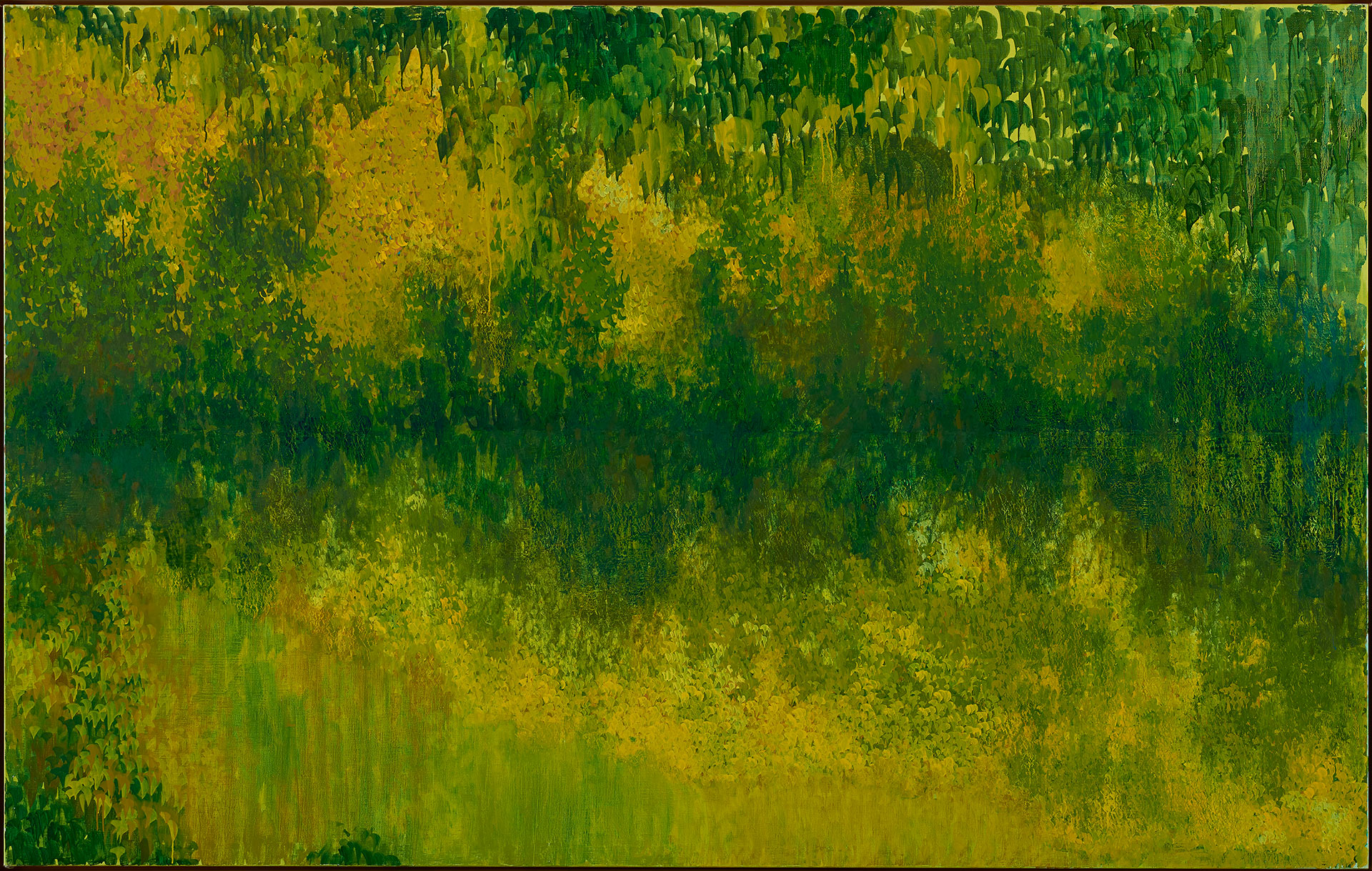
Soledad Sevilla (Valencia, 1944)
Middle East
1999
WORK INFORMATION
Oil on canvas, 145 × 230 cm
OTHER INFORMATION
Inscription on the reverse: "Middle East"
The Valencian painter Soledad Sevilla studied at the Sant Jordi School of Fine Arts in Barcelona, where she had her first one-woman show at Galería Trilce in 1969. She then went to Madrid to attend a seminar on the "Automatic Generation of Plastic Forms" at the Computing Centre of the Complutense University of Madrid. Later, between 1980 and 1982, she conducted a formal study of the motif based on line patterns at Harvard University. Always moving in the field of abstraction, she started out working with icons such as Las Meninas, creating her own interpretation of the space and light in Velázquez's masterpiece with grid lines in acrylic colours that overlap and intersect on the canvas, producing some opaque and other more transparent zones always marked by a precise yet lyrical sense of luminosity. The geometric quality of her grid paintings carried over to other series like La Alhambra in the 1980s, when she had returned to and settled in Barcelona. At that time she began creating installations in which light and perceptive effects always played a central role. In 1993 she received the National Visual Arts Prize and the Alfons Roig Prize from the Regional Government of Valencia.
After the mid-1990s, Sevilla left her grids behind and painted a series of "plant walls" dominated by colour and light, one of which was Medio Oriente [Middle East]. In this work we see a space filled with foliage, animated by a light that filters through and illuminates countless yellow and green hues. It suggests a peaceful landscape, a poetic setting pulsing with life. The darker greens in the centre create a horizon that leads us to view the composition as vegetation reflected in water. Instead of the acrylics that characterised her earlier work, here Sevilla used oils to paint more thoughtfully, establishing a slow rhythm between drying times and her accumulative, progressive painting. She employs similar types of brushstrokes in every picture, long and wavy in some cases and leaf-shaped (as we see here) in others. In Middle East the strokes change in size, density and tone but always retain their leaf shape, hanging above in the foreground like Islamic muqarnas. Sevilla's work has always been linked to the effects of light, and she creates her paintings as disciplined, almost ritual superimpositions of daubs of colour that seem to retain a somewhat modular quality, although the lines of her earlier series are transformed here into descriptive, organic brushstrokes. This series and the slightly later one entitled Insomnios [Insomnias] are derived from memories of ivy-covered walls in the painter's image bank, but they also draw on other installations such as her Leche y sangre [Milk and Blood] (1986), in which she covered the gallery walls from ceiling to floor with rows of red carnations that withered, changed colour and lost their petals, incorporating the real cycle of time into their image. [Carmen Bernárdez]

